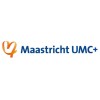
Repair of Achilles Sleeve Avulsion: a New Transosseous Suture Technique
Achilles Tendon RuptureFracture1 moreThis retrospective study identified 12 patients with Achilles sleeve avulsion from November 2013 to March 2016, aiming to explore a new transosseous suture technique for the repair of Achilles sleeve avulsion and observe the short-term curative effect.

Trace Elements and Heavy Metals at PPROM
Preterm Rupture of MembranesObjectives: To evaluate maternal serum trace elements and heavy metals namely, aluminum (Al), chromium (Cr), manganese (Mn), cobalt (Co), nickel (Ni), copper (Cu), zinc (Zn), arsenic (As), molybdenum (Mo), cadmium (Cd), tin (Sn), antimony (Sb), mercury (Hg), and lead (Pb) in pregnant women complicated by preterm prelabour rupture of the membranes (pP-ROM) and to compare the results with healthy pregnancies. Methods: Maternal serum levels of Al, Cr, Mn, Co, Ni, Cu, Zn, As, Mo, Cd, Sn, Sb, Hg, and Pb were measured in the study group, which included 55 pregnant women complicated with pP-ROM and 60 healthy pregnancies (control group) with respect to maternal age and gestational weeks. The maternal serum levels of trace elements and heavy metals in both groups were measured using an inductively coupled plasma-mass spectrometry (ICP-MS) and compared.

Study of a COX-2 Inhibitor for Prevention of Ovulation
Rupture; Graafian FollicleIn this study the investigators propose to evaluate a COX-2 inhibitor(meloxicam) to assess its effect on follicular development and find out if this regimen delays or blocks ovulation while maintaining ovarian cyclicity. The investigators intend to administer 15 mg or 30 mg of meloxicam per day for 18 days starting on day 5 after onset of menses during 3 continuous cycles. The 3 treatment cycles will be preceded and followed by control cycles with no treatment. Ovulation or lack there of will be monitored by transvaginal ultrasound examinations (TVUs), estradiol, luteinizing hormone (LH), and progesterone levels in multiple blood samples in each cycle. The investigators will recruit a total of 56 women. Each woman will be randomly assigned to 1 of the 2 dose regimens of meloxicam, with 28 women assigned to each of the 2 dose regimens. Participating women will demonstrate an ovulatory cycle before starting meloxicam treatment and will be protected from pregnancy by prior sterilization.

Multicenter Orthopaedics Outcomes Network for ACL Reconstructions
Rupture of Anterior Cruciate LigamentThe purpose of this study is to determine the effect of modifiable risk factors on knee function, osteoarthritis, and re-rupture of the anterior cruciate ligament (ACL) following ACL reconstruction.

Feasibility of Electro Auricular Acupuncture for Analgesia After ACL Surgery: The Feasibility of...
ACLACL Injury3 moreAcupuncture research in regards to PONV has been fairly well established, however, studies about perioperative pain control and acupuncture are a little more murky. In 2008, a meta analysis looked at randomized controlled studies and found that while acupuncture was shown to decrease pain, there were limitations including credible placebo or sham intervention, and thus, blinding. The main purpose of this feasibility trial is to determine whether or not adequate blinding is possible in the intraoperative setting with the patient sedated.

Mechanical Complications of Acute Myocardial Infarction During COVID-19 Pandemics
Ventricular Septal RupturePapillary Muscle Rupture2 moreThe ongoing COVID-19 pandemics has put an overwhelming pressure on the healthcare systems of many European countries. Such a situation has potentially led to delayed and impaired access to appropriate treatment for patients affected by other severe, non-COVID-19-related conditions, including cardiovascular diseases. This resulted in a reported lower admission, but higher mortality rate for AMI patients. Such a situation might be explained by many factors, including unavailability of early reperfusion therapy and late hospital presentation of AMI patients due to a general anxiety related to the COVID-19 contagious risk of the hospital environment. As a matter of fact, during this year of pandemics, several case reports suggested a new, significant surge of post-AMI mechanical complications, sometimes describing patients admitted in too severe conditions to consider surgical repair a viable option, and therefore inevitably undergone an unfavorable outcome. Therefore, we decided to involve the large network of European centers already participating to the "Caution Study 1", in order to study the impact of COVID-19 pandemics on the outcomes, incidence and treatments of post-AMI mechanical complications.

Reconstruction of the Anterior Cruciate Ligament(ACL-R) in the 30+-Year Old Assessed by Patient...
Cruciate Ligament RuptureThe purpose of the study is to evaluate the efficacy of primary ACL-R in patients 30 years of age or older using PRO. The PRO used are Knee Osteoarthritis Outcome Score(KOOS) and Tegner score. The Danish Knee Ligament Reconstruction Registry has data including more than 31,000 primary ACL-R performed in the period from 2005 to 2018, of which approximately a little less than 40% are performed in patients 30 years or older. Traditionally, ACL-R has been used for the active, younger patients with the purpose of returning to their pre-injury level of activity. The increasing activity level and the desire to stay active among some patients in their fourth decade, and later, possibly increases the demands of the reconstructed ACL in this group. The aim is to investigate the PRO in this group of patients and compare them with the PRO of patients younger than 30 years of age. The study may help orthopedic surgeons counselling patients 30 years of age or older when deciding to perform an ACL-R. The study's hypothesis is, that the overall benefit from ACL-R is equal but the patients 30 years of age or older has a worse baseline and as an implication of that worse PRO one year after the ACL-R.

The Effects of Remnant-Preserving Anterior Cruciate Ligament Reconstruction on Proprioception and...
Anterior Cruciate Ligament RuptureAnterior cruciate ligament (ACL) reconstruction is a frequently performed surgical procedure to stabilize the knee joint biomechanically. At the same time, one of the goals is to improve clinical outcomes and return the patient to their daily life as early and ready as possible, as well as to sports activities. Remnant-preserving anterior cruciate ligament reconstruction is one of the reconstruction approaches that aim to achieve these goals earlier and more safely than the standard surgical procedure. However, there is no consensus in the literature regarding the effects of remnant-preserving ACL reconstruction on clinical outcomes and its superiority over the standard surgical procedure. Therefore, the aim of our study is to compare the proprioception and functionality of patients who underwent ACL reconstruction with the remnant-preserving approach, by classifying them according to stump size.

Multimodal Monitoring of Fetal Risk of Inflammation in Preterm Premature Rupture of Membranes
Preterm Premature Rupture of MembranesFetal Inflammatory Response Syndrome2 moreThe purpose of this study is to examine whether the value of vaginal fluid cytokine levels as well as computerized fetal ECG analysis are suitable clinical parameters to detect an imminent intra-amniotic inflammation with a high risk of fetal inflammatory response syndrome (FIRS) or a neonatal early onset sepsis (EOS) and whether these parameters can be determined on a daily basis in the clinical monitoring of pregnancies complicated by PPROM.

Metabolic Complications Following Achilles Tendon Rupture - A Cohort Study
Achilles Tendon RuptureImmobilizationIntroduction This study will evaluate the effect on glucose, lipid and bone metabolism following conservative orthopaedic procedures in patients who suffered from acute Achilles tendon rupture. The sedentary rehabilitation period following these procedures may impact negatively upon glucose, lipid and bone metabolic pathways whereas the more physically active rehabilitation period instituted 8 weeks after the injury is hypothesized to impose positive metabolic effects. The study is addition to the on-going clinical trial, Non-operative Treatment of Acute Achilles Tendon Rupture: Early Controlled Mobilization Compared With Immobilization, ClinicalTrials.gov Identifier: NCT02015364. Perspective This study will establish whether the well-known effects on glucose, lipid and bone metabolism of a sedentary lifestyle can be observed already following 8 weeks of almost total abstain from physical activity in non-diabetic individuals, who suffered an acute Achilles tendon rupture. Thereby, we will add knowledge to the previous findings following strict bed-rest in healthy individuals on glucose and lipid metabolism and bone turnover. In a clinical perspective it is important to examine the extent to which individuals deteriorate in various metabolic pathways to better understand the pathophysiology behind these defects both in healthy individuals and in patients, who undergo bed rest or an equal reduction in physical activity as part of their rehabilitation. Study design The present study includes 50 cases, who are examined early following injury (< 2 weeks) (baseline), 8 weeks (6 - 10 weeks) after injury and 52 weeks (40 - 64 weeks) after injury, respectively. Oral glucose tolerance test (OGTT) with ingestion of 75 g of glucose during a maximum of 3 min from baseline (0 min). Plasma for glucose, insulin, C-peptide, NEFA will be drawn. The individual will bring in morning spot urine for measurement of suPAR, creatinine, albumin and orosomucoid. The individual will have drawn blood for measurement of HbA1c, total cholesterol, LDL cholesterol, HDL cholesterol, triglyceride, Na, K, creatinine, HgB, CRP, leukocytes, ALAT, alkaline phosphatase, Ca++, D vitamin, TSH, albumine and amylase. Also blood for BTM and plasma suPAR, IL6, TNFa and hsCRP will be drawn. Finally blood for lipid density profiling and lipid particle size will be drawn DXA of hip and lumbar spine including abdominal visceral and subcutaneous fat is done on a Hologic Discovery scanner.
